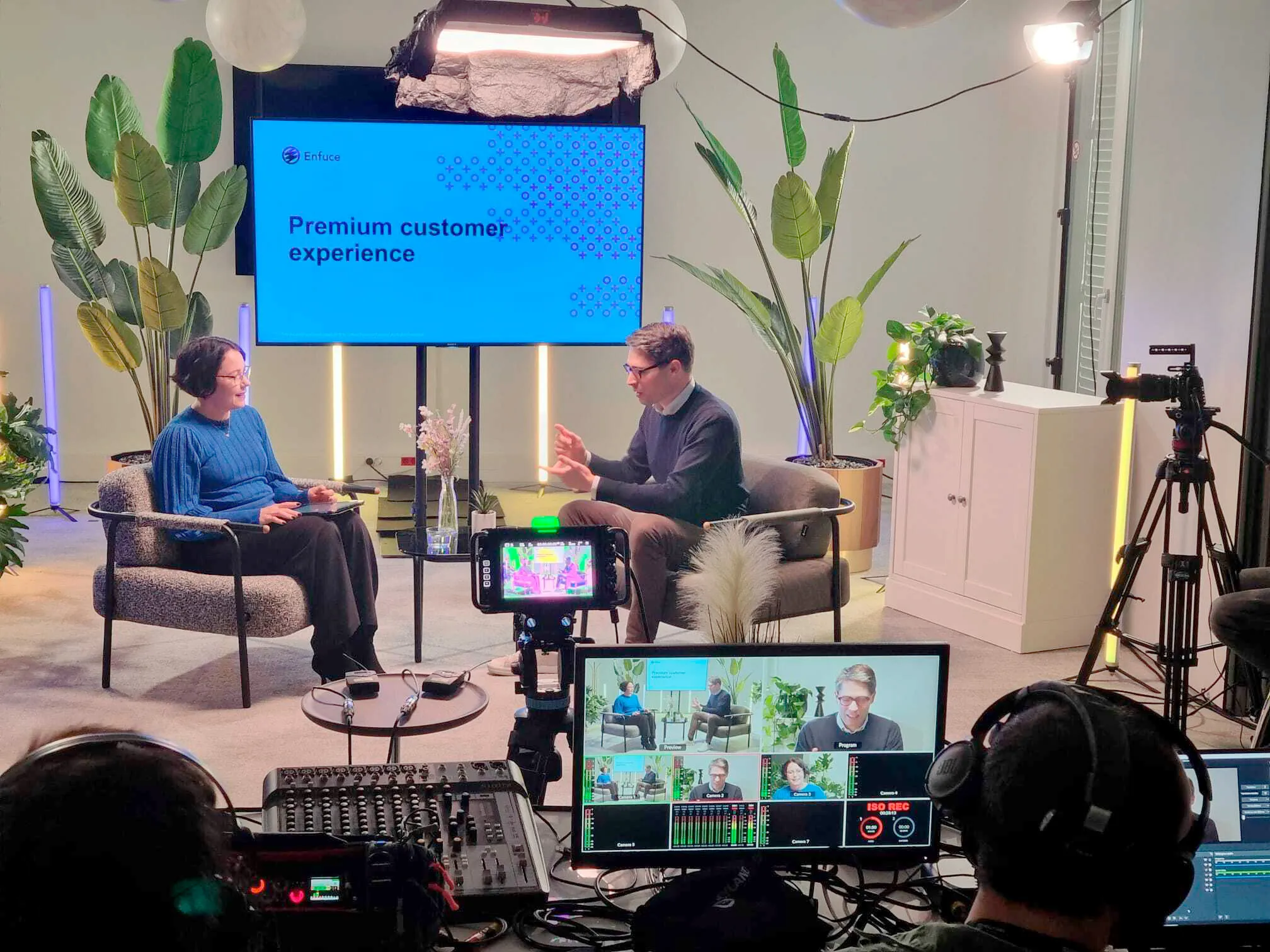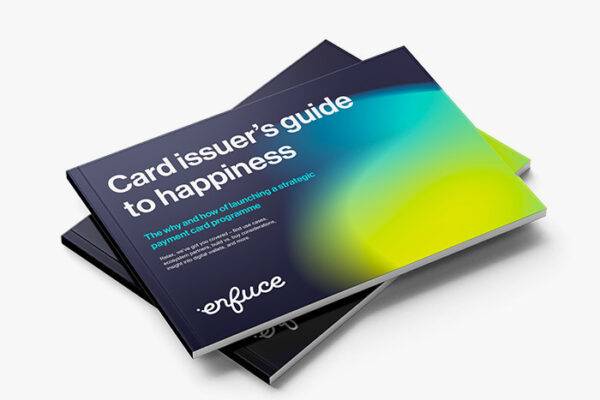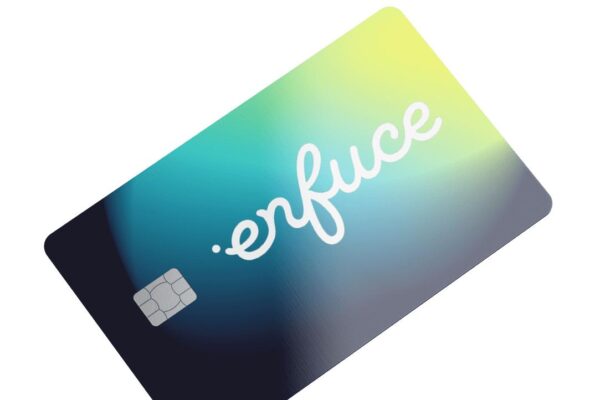Insights from Memo Bank: How to drive digital revolution in B2B payments for SMEs

Memo Bank has revolutionised financial management for small and medium-sized enterprises with full banking services including digital payments. What kind of mindset, tech, and partners made it possible? What can decision-makers in banks, neobanks and fintechs learn from their journey?
Watch the full recording here: Webinar recording: How to drive digital revolution in B2B payments (learnings from Memo Bank)
Jean-Daniel Guyot, Co-Founder and Chairman of the Management Board at Memo Bank shares his insights on the topic, accompanied by Enfuce’s Co-Founder and Co-CEO, Denise Johansson.
By reading this article—or by checking out our webinar snippets—you’ll discover:
- What kind of market need the founding of a revolutionary bank responded to
- How Memo Bank built a unique customer experience
- Recommendations for working with partners
- …and more.
1. Responding to the struggles SMEs have with traditional banks and legacy tech
Our goal is to create a new experience for SMEs. A bank with speed and a lot of technology for the 21st century.
Jean-Daniel Guyot, Co-Founder and Chairman of the Management Board at Memo Bank
Memo Bank was the first French bank in 50 years to be licenced. As a trailblazer in B2B banking, they provide truly modern financial services and payment options to respond to the needs of SMEs.
The idea to revolutionise the banking industry in France began with a simple notion: traditional banks and legacy tech were not designed for the needs of rapidly growing businesses. They’re not equipped for speed, and the technology is often treated as an add-on.
As an entrepreneur, Jean-Daniel had first-hand experience with the shortcomings of banking services for SMEs – both in terms of speed and customer experience. Thanks to his experience in creating digital services, Jean-Daniel knew exactly how to solve this problem, supported by technology.
Entering the banking ecosystem was not easy, as the founders didn’t have a background in the industry. But what they did have were fresh ideas and a desire to challenge the status quo. They decided to bring together a lot of experienced people from within the industry, and with them, lots of diverse thinking.
“It’s never just about technology. Rather, it’s about how you build an organisation, rethink the processes, and support all that with technology to create the best experience for your clients,” Jean-Daniel says.
2. Shaping customer expectations in the business banking space
Memo Bank’s goal was to offer a premium customer experience with choice, speed, and simplicity. The SME customers had already seen this in the consumer banking space, but never thought it would be available for them as business customers.
The customer experience spoke for itself. Thanks to Memo Bank’s technology, processes, automation and APIs, their customers can now get full banking services fast. The cloud-based debit setup with instant and deferred debit gives full flexibility with the payment solution. What used to be a two-week process with traditional players and legacy tech, could now be just a two-click process with Memo Bank.
Agility is nothing new to those coming from a technology background but it is quite fresh in banking. Since SME customers need speed, everything from decision making to market entry needs to happen quickly. Traditional banks don’t tend to be up for this kind of speed.
APIs and automation bring the speed that clients require, but a customer relationship is formed in personal contact. That’s why Memo Bank has a team of bankers backed up by modern technology.
3. Validating the offering through limited market entry
Today, Memo Bank provides a full portfolio of banking services and products that best match the needs of modern businesses. To get there, they started off with a limited offering – which didn’t even include payment cards – and waited for customer feedback.
Starting off as a secondary bank instead of a primary one bought the Memo Bank team time to think about what kind of products and services the market had a need for. The insights and feedback from their customers allowed them to define their priorities for building new products and to grow into a primary bank for their customers.
We could really design our products for actual needs, rather than just touring the market and thinking virtual things only.
Jean-Daniel Guyot, Co-Founder and Chairman of the Management Board at Memo Bank
4. The partnership with Enfuce and shared technology views
Memo Bank has decided to rely on a few, trusted partners. Enfuce is one of them. The two companies share a no-nonsense attitude, an appreciation for open communication, and a similar ambition level with technology and security.
The partnership frees Memo Bank’s own resources to be in control of its core competence: the customer experience. This includes building the technology and hiring the right people to stay on top of it.
“Enfuce is there 24 hours a day, every day of the year, making sure that all payments go through. That’s a tough job – and it’s not our job. That’s why we sometimes make the choice to rely on partners,” Jean-Daniel says.
As an issuing and processing partner, we are very niche. It’s infrastructure, it’s technical, and frankly the most unsexy part of the customer experience. But also a crucial one, and you have to be excellent at it, Denise adds.
5. Memo Bank’s recommendation for working with partners
Memo Bank’s number one selection criterion for their partners is reliability – and that goes way beyond minimising downtime. It’s one thing to present numbers, and a whole another to demonstrate how one reacts and takes action when “s*** hits the fan”.
Let’s be real. All infrastructure has problems every now and then. The perfect software simply doesn’t exist. Even if a partner’s uptime is proven to be 99.99%, they still need to have the capabilities, knowledge and communication skills to deal with whatever comes when things go wrong – because they inevitably will.
That’s why transparency is key. When there’s a glitch, it’s crucial that the partner speaks up about it immediately and clearly, and then has the expertise to fix it quickly. And once you have full visibility into any issue, you’ll be able to make the right decisions.
The key takeaway? Rely on good partners and seek honesty and expertise. Figure out how it’ll be in the bad times and what you can learn from each other. These kinds of partnerships are more than transactions, after all.
Fuel growth for your business by launching payment cards
Did you enjoy what you just read? Learn more about Memo Bank choosing Enfuce as its card issuing provider to launch the first expense platform integrated into a bank account in our press release.
Are you also looking to fuel growth for your neobank by launching payment cards? Here are the cornerstones of how working together with Enfuce starts:
- Tech: we structure a plan to ensure security and compliance. You can get started quickly with our proven and tested off-the-shelf features.
- People: you’ll be assigned a dedicated customer success manager, whose job is to make sure your project proceeds according to plan, and that you get everything you need.
- Processes: your onboarding follows a four-phase project structure that helps you build your app towards our APIs in a focused way.
With us, you’ll get everything you need to issue payment cards for your customers. You can focus on your core business, while we take care of the rest.
Does this tick all the boxes for you? Then don’t hesitate to contact us!



